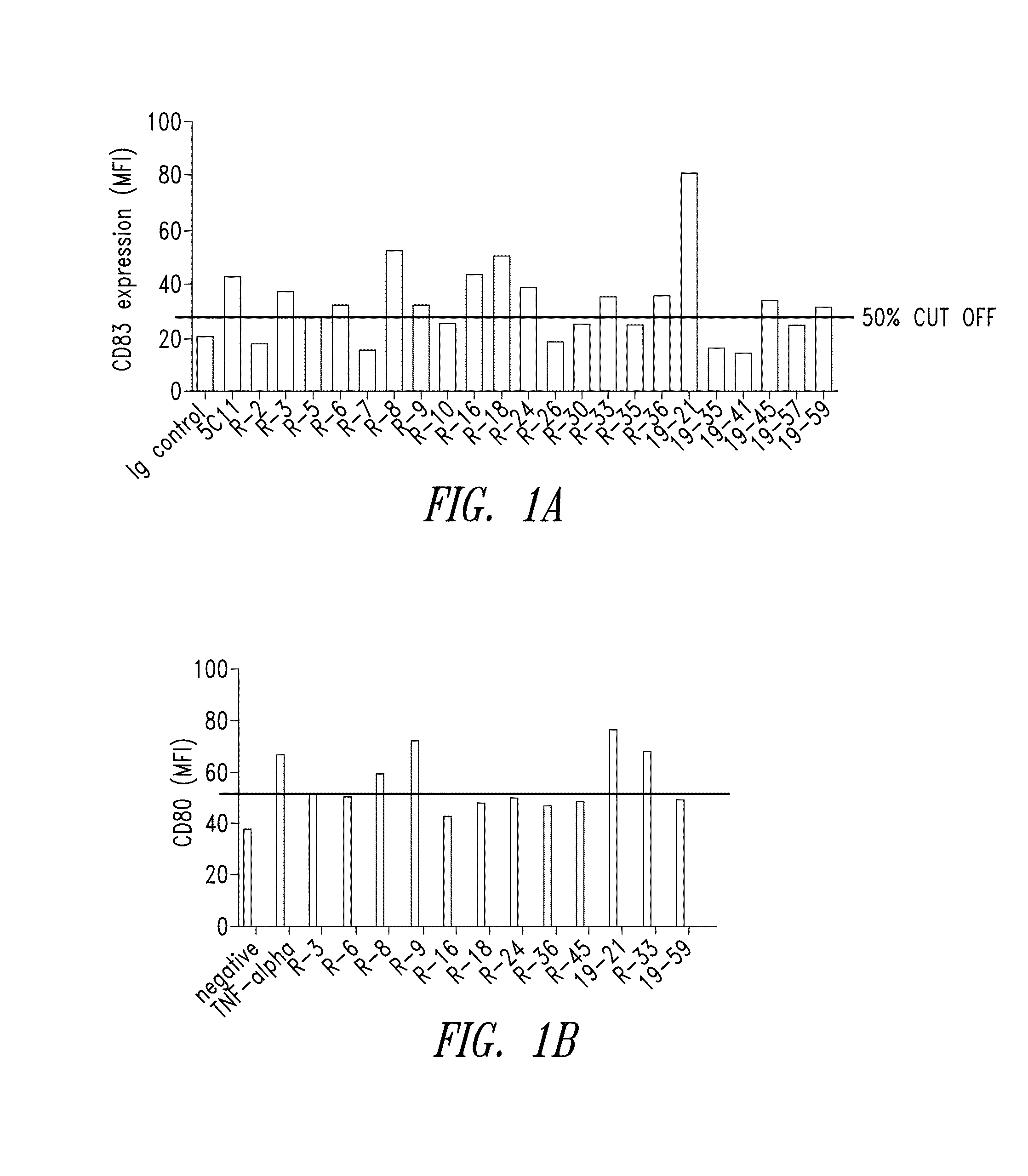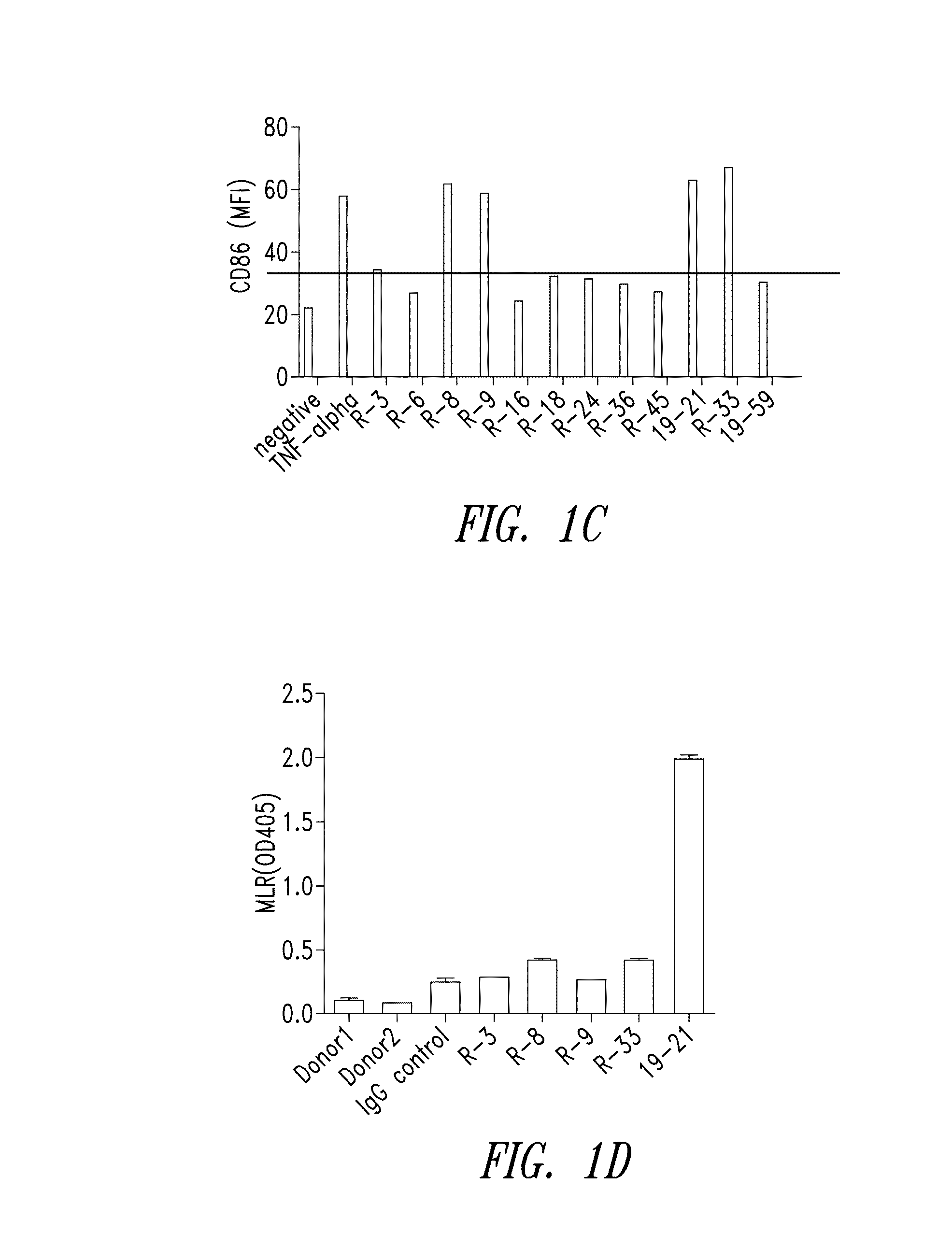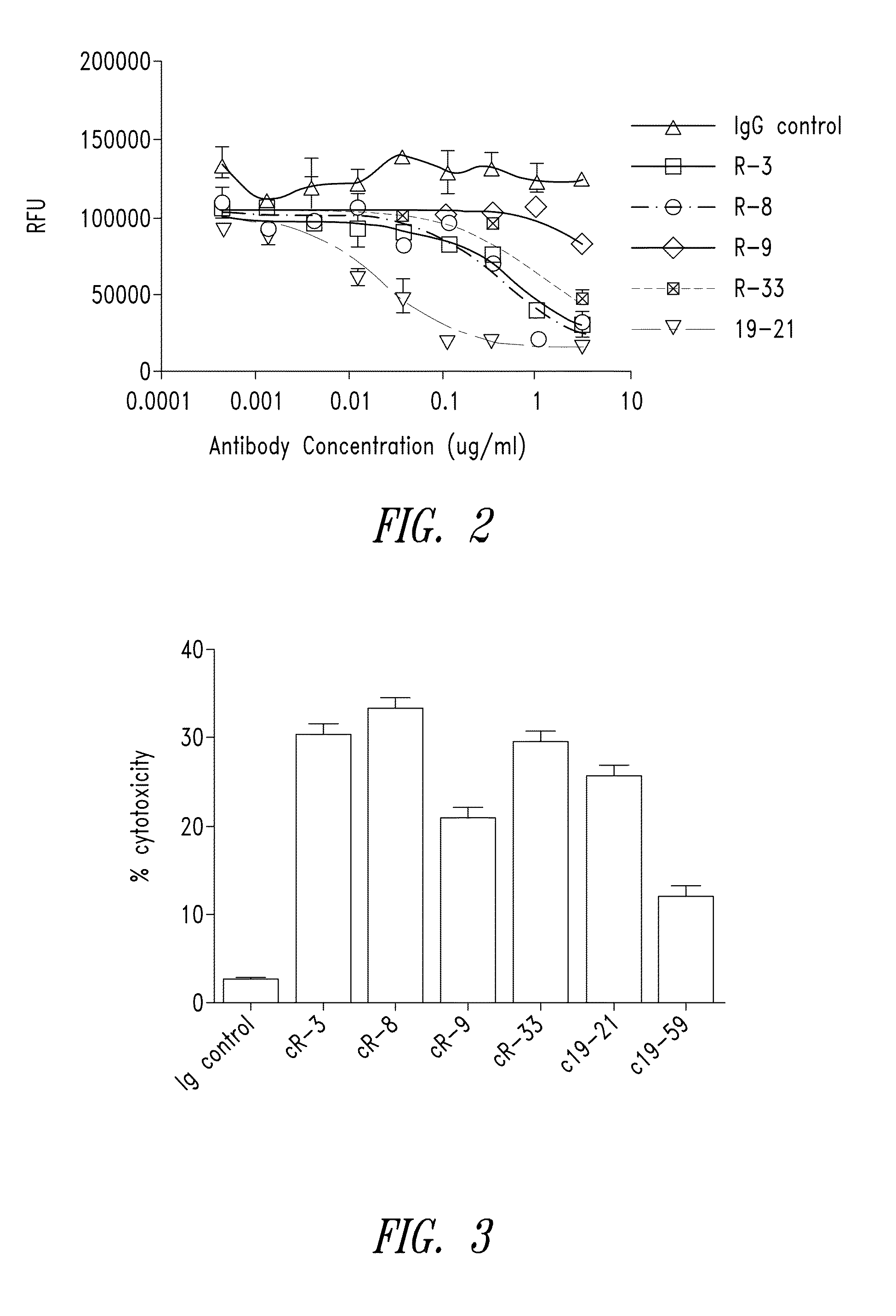Anti-cd40 antibodies and methods of use
a technology of anti-cd40 and anti-cd20, which is applied in the field of anti-cd40 antibodies, can solve the problems of limited ability of sgn-40 to fully boost limitations in clinical outcomes, and current approaches targeting cd20 have limitations, so as to improve the anti-tumor immune response, improve the anti-cd40 agonist activity, and increase the binding affinity of fcriib
- Summary
- Abstract
- Description
- Claims
- Application Information
AI Technical Summary
Benefits of technology
Problems solved by technology
Method used
Image
Examples
example 1
Production and Humanization of Anti-CD40 Antibodies
[0267]Four New Zealand white rabbits were immunized with recombinant rabbit Fc-hCD40. The rabbit with the highest serum titers of specific binding to human CD40 was chosen for cell fusion. A total of 172 hybridomas were identified as positive binders to soluble Fc-hCD40, of which 44 clones were found to be positive binders to cell surface CD40. After the epitope clustering assay, 24 representative hybridomas were selected for recombinant expression and further characterization. Secondary functional screening was carried out as described further below and included: 1) induction of DC maturation as measured by CD80, CD83, CD86 upregulation (agonist activity); 2) induction of direct tumor growth inhibition (agonist activity); and 3) ADCC antibody effector function. Candidates were selected based on dual functional screenings which included two arms: 1) binding affinity, antibody internalization, antibody dependent cellular cytotoxicity...
example 2
In Vitro Characterization of the APX005 Humanized Anti-CD40 Antibody
[0275]Numerous in vitro experiments were conducted to further characterize the APX005 humanized antibody.
APX005 Selectively Binds to CD40
[0276]Binding selectivity of APX005 was assessed by direct ELISA to a panel of TNFR family proteins. A total of 1 μg / ml of fusion protein of rabbit Fc and CD40, RANK, TweakR, OX40, DR5 and 4-1BB were coated on ELISA plates. Bound APX005 was detected using goat anti-human HRP-conjugated IgG. As shown in FIG. 5, APX005 selectively binds to human CD40 but not other TNFR family proteins tested.
APX005 Blocks Binding of CD40L to CD40
[0277]An ELISA was conducted to assess the effect of APX005 on CD40L binding to CD40. In particular, CD40L (4 μg / ml final concentration) was used to bind the immobilized human CD40 onto an ELISA plate, and changes in the binding amount of CD40L to CD40 were measured after pre-incubating immobilized CD40 with APX005. CD40L binding to immobilized CD40 was detec...
example 3
In Vivo Characterization of the APX005 Humanized Anti-CD40 Antibody
[0285]Numerous in vivo experiments were conducted to further characterize the APX005 humanized antibody.
APX005 Inhibition of Tumor Growth in the Ramos Model
[0286]In order to evaluate the effect of APX005 on the xenograft model of human B cell lymphoma, female BALB / c nu / nu mice 6-8 weeks of age were used for tumor cell innoculation. Xenografts were established by subcutaneous inoculation of 1×107 tumor cells / mouse into the dorsal flanks. When tumors reached an average volume of about 100 mm3 (50˜200 mm3), the animals were randomized into groups. Antibodies were administered intraperitoneally at 3 mg / kg starting at day 13 (see FIG. 12). Dosing was administered 3 times per week for a total of 9 doses (eight animals per group). Perpendicular dimensions of the tumor were measured using a Vernier scale caliper. Tumor volumes were calculated using the formula: Volume=(length×width2) / 2. As shown in FIG. 12A, APX005 demonstra...
PUM
 Login to View More
Login to View More Abstract
Description
Claims
Application Information
 Login to View More
Login to View More - R&D
- Intellectual Property
- Life Sciences
- Materials
- Tech Scout
- Unparalleled Data Quality
- Higher Quality Content
- 60% Fewer Hallucinations
Browse by: Latest US Patents, China's latest patents, Technical Efficacy Thesaurus, Application Domain, Technology Topic, Popular Technical Reports.
© 2025 PatSnap. All rights reserved.Legal|Privacy policy|Modern Slavery Act Transparency Statement|Sitemap|About US| Contact US: help@patsnap.com



